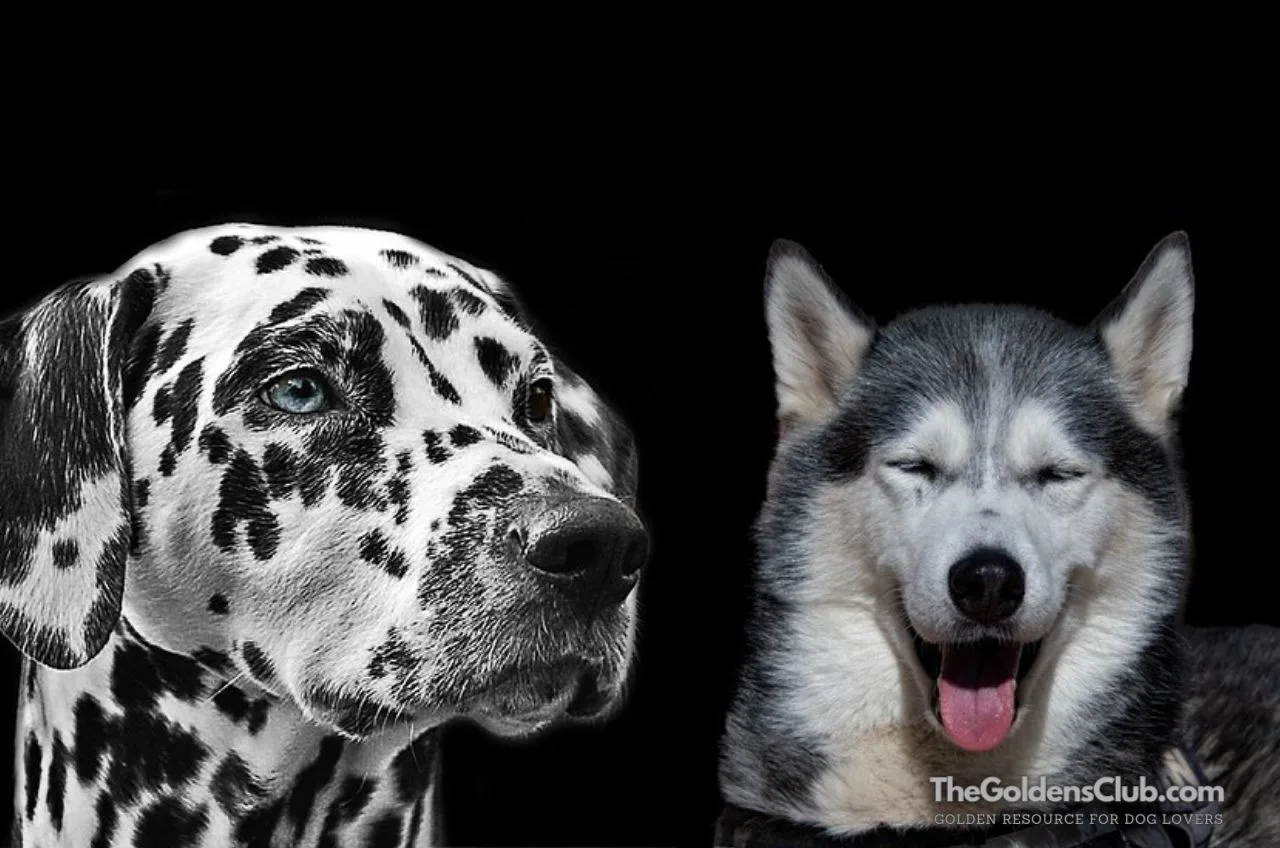We’ve talked about many dog crossbreeds, for example, Pitbull Husky Mix, Labrador Husky Mix or the Rottweiler Golden Retriever Mix. But none has left me speechless like the Dalmatian Husky Mix.
I know that sounds dramatic, but by the end of this article, you will see why I chose those words.
As the name suggests this is a mix between the Dalmatian and Siberian Husky. Both of these breeds are very unique and are popular in the whole world. So, there is no way that their mix could be any less special!
In this article I’d like to talk more about this interesting mix, what they look like, their nature and traits. We’ll also talk more about how to take care of them and how their health is.
| Height | 19 to 24 inches |
| Size | Medium |
| Weight | 45 to 70 pounds |
| Lifespan | 10 to 15 years |
| Price | $500 to $1,000 |
| Coat Colors | Black, White |
| AKC Recognition | No |
Dalmatian Husky Mix Dogs
We don’t really know when this hybrid breed was developed, but given that there isn’t much information about them we can assume that it’s a newer mix.
It’s always hard to talk about mixed breeds because there usually isn’t a lot of information. There is no breed standard, so we can’t tell you exactly how they will look or be like. And, understandably, for many people, this is a total turn-off. We all want to know what kind of dog we’re getting when we’re getting one. We want to be prepared for everything.
But, the good news is that we can get a general idea about this mix by looking at the parent breeds. For example, we all know that Dalmatians have spots all over their bodies, so it’s very likely that this mix will have dots too! Then, we know that both parent breeds are large dogs, so obviously, the Dalmatian Husky mix will be too.
The general rule when getting a mixed breed is to be aware that your puppy might have traits of both parents. But, they could also be more like one parent breed or the other.
So, it’s important that you really research both breeds well and are aware of all their traits. You should know what each breed is bringing to the table so to say. Only that way there won’t be any surprises when you get your puppy, you’ll be prepared for every scenario.
With that being said, let’s take a look at all the parent dogs and their origins.
The History of the Dalmatian
The Dalmatian has an interesting history that dates back to the 18th century, and is recognized for his spotted coat and powerful frame.
Historians say the Dalmatian was developed in Croatia, where he was widely used as a guard dog in the Dalmatia region (hence his name).
The Dalmatian was later utilized as a coaching dog in the United Kingdom, strolling with the rich and famous’s coaches, earning the nickname “the Spotted Coach Dog.”
This dog has served as a guard dog, a circus dog, and a hunting dog over the years.
The American Kennel Club first recognized the Dalmatian in 1888, and it is currently one of the most popular dog breeds in America.
So, how does the Siberian Husky fare? Is he like the Dalmatian in that he has a fascinating backstory? Let’s have a look.
The Origin of the Siberian Husky
The Siberian Husky, a descendant of the dogs bred by the Chukchi people of North Eastern Siberia, is often regarded as one of the world’s oldest dog breeds.
Around 3000 years ago, when the nomadic Chukchi people intended to expand their hunting zone, they needed to create the ideal sled dog. These dogs have to be tough and able to survive extreme cold.
The resulting dogs would also be capable of transporting their masters’ belongings across long distances with little or no food.
Modern Huskies are said to be connected to historic Chukchi canines, though there is some controversy about the purity of the bloodline.
Huskies in the United States
Huskies came to the United States in 1909 to run in the All Alaska Sweepstakes Race. These puppies were thought to be great sled dogs, and they proved it year after year by winning the tournament.
In 1925, the dreaded disease diphtheria ravaged the young children of Nome, Alaska.
The antitoxin for diphtheria was nearly 1000 miles away. Because the train couldn’t get as far as Nome, Mushers and their crew of Siberian Huskies risked the cold to deliver the much-needed present 674 miles away.
These canines were hailed as national heroes after completing their task, and their exploits were featured in newspapers across the country.
Their rapid celebrity allowed them to work in search and rescue missions on the continent of the United States.
Huskies have been registered with the American Kennel Club (AKC) since 1930, and the Siberian Husky Club of America is the breed’s club.
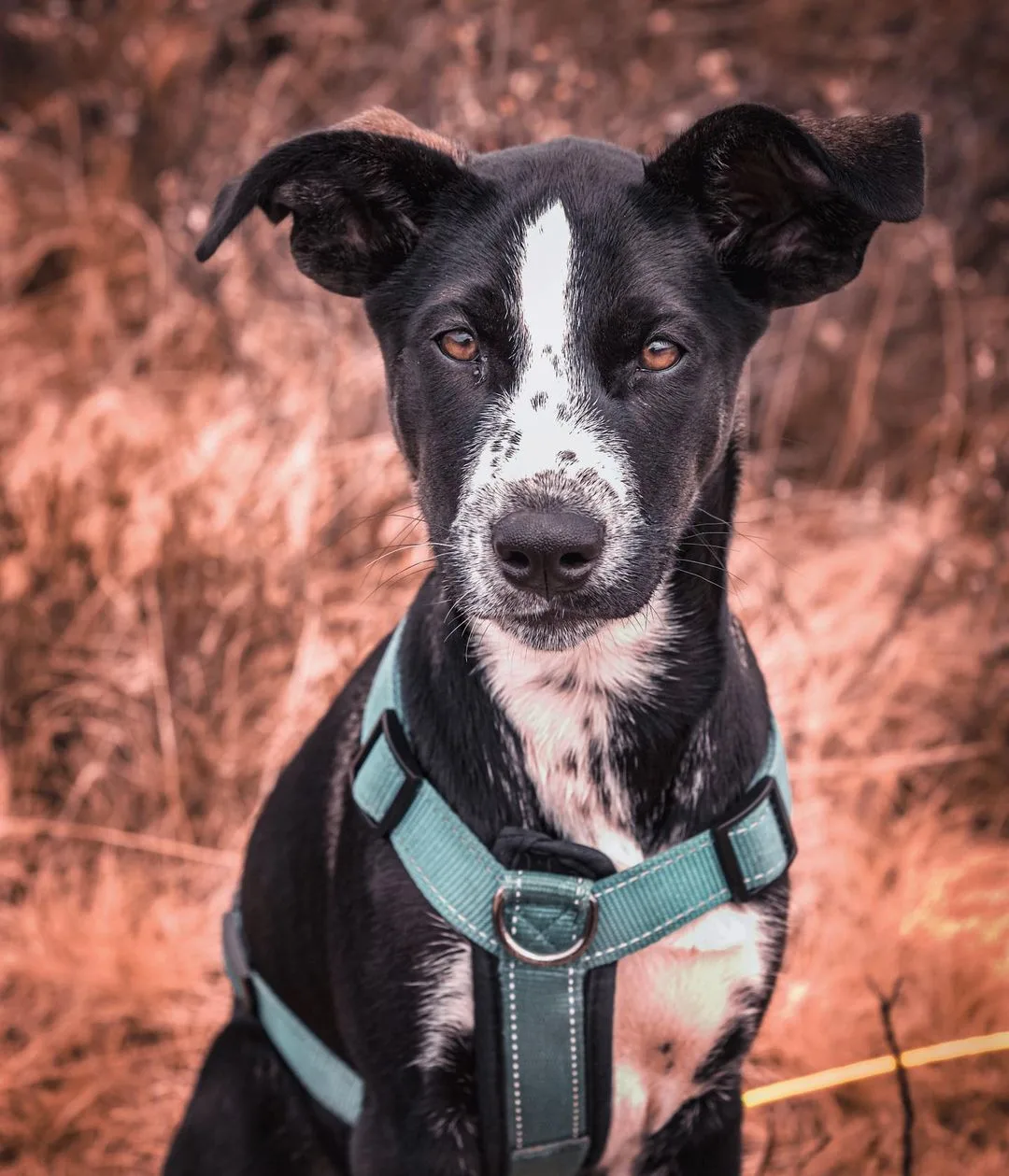
Photo: Instagram (@
phoenixlapphund)
Physical characteristics of the Dalusky hybrid dog breed
So what does the Dalmatian Husky mix look like? Like we’ve mentioned, the Dalmatian Husky mix will look like a combination of both parents, its genetics. It can be any different. So, to make it easier we’ll tell you a bit more about the parent breed’s appearance.
Dalmatian Husky mix size
These are not small animals. The average Dalmatian will reach between 19-24 inches in height, weighing between 45 to 70 pounds. Dalmatians are easily recognizable because their fur has a unique pattern. It is white and has small black or brown patches all over it.
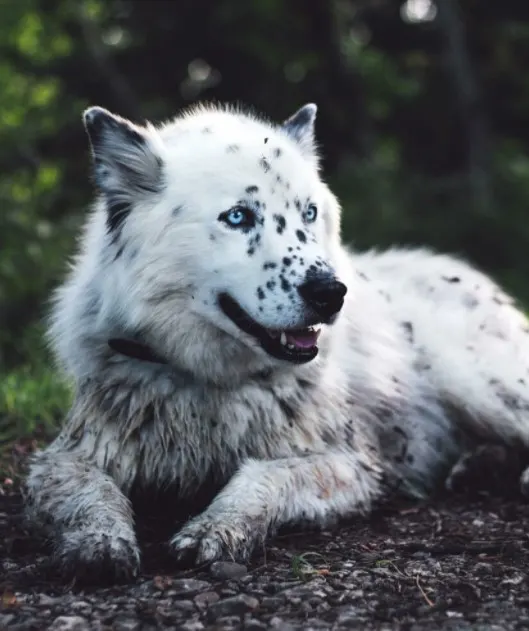
The smooth white short coat of the Dalmatian is very dense but without an undercoat. It emphasizes his well-proportioned and athletic physique, which gives the Dalmatian a very elegant gait. Its slim body has a strong back with a straight backline and muscular shoulders. Its neck is long and strong and doesn’t have any skin folds. His rounded, lop ears are set high on his narrow skull and are close to the head. Their eyes are brown.
A pure-bred Siberian Husky is a lot like a wolf because they are so big. A full-grown Husky can weigh between 44 and 61 pounds and is between 21 and 24 inches tall. Usually, they should be on the slimmer side, but because of their fluffy coat, they might appear larger. Unlike the Dalmatian, the Husky has a double coat.
A type of coat that consists of two layers, a dense undercoat of short hairs, which is woolly in texture and a top coat of longer hairs called guard hairs. Their coat color can take on all colors from white to red and gray to black. The eyes of the dogs are almond-shaped and slightly slanted and they can have blue eyes, brown eyes, or a mixture of both. The triangular ears are set high on the head and are close to each other.
Dalmatian Husky mix behavior and personality traits
When it comes to the nature of this mix you can expect the unexpected. Just kidding, the Dalmatian Husky is a loving and smart dog! But, because Huskies are pack dogs, this mix needs a firm leader. Because of this trait, this cross can also be destructive when they are bored or don’t get enough exercise. That’s why you shouldn’t leave them alone for too long.
This mix loves to dig, you won’t be able to stop them. So it’s better to teach them where they can dig, instead of punishing them every time they dig a hole in your backyard. Now, it might seem like this mix is impossible to handle. And sure, they are sometimes a bit challenging, but if you train and socialize them well you won’t have any problems. In fact, you’ll see that they are amazing dogs to be around, playful and charming.
The Husky Dalmatian mix doesn’t bark, but they do howl, they get this from their Husky parent. Now, because of their size and activity level, you should know that this mix might not be a good apartment dog. He is better suited to a home with a large, fenced yard where they can go out when they want to. Also, know that they should wear a harness and not a leash. The reason for this is that they can pull so hard on the leash that they could injure you or themself.
When it comes to children, this mix is okay with them. But keep in mind that they get quite big and strong. They also have a lot of energy, so it can easily happen that they hurt your kid while playing with them. So, please don’t let them play unsupervised, accidents can always happen. Husky Dalmatian puppies still make a good family dog if they undergo proper training.
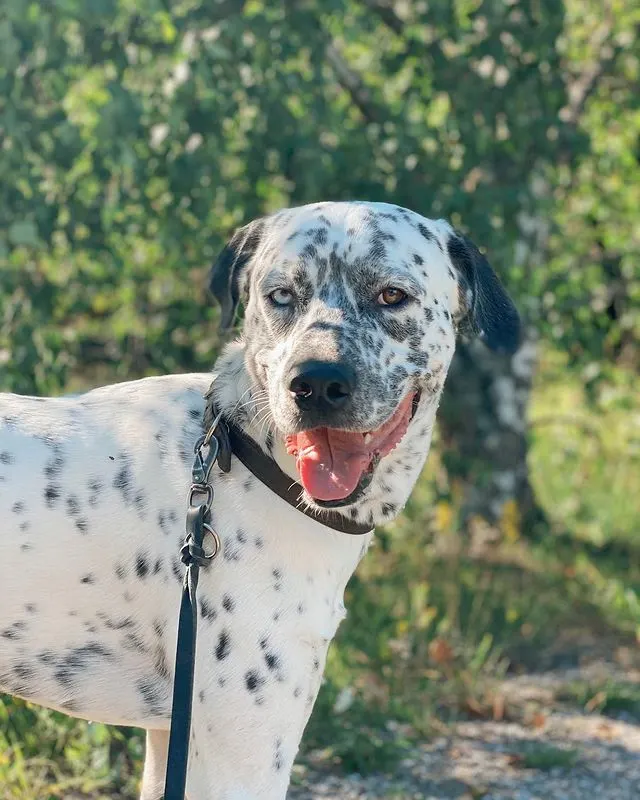
Photo: Instagram (@
borje.sallyla)
Training a Dalmatian Siberian Husky Mix
Because both the Dalmatian and the Siberian Husky are intelligent dogs, training the Dalusky should be simple. You should be mindful, though, of his obstinacy. That’s why they are often a coaching dog, circus dog, hunting dog, guard dogs, or even in rescue missions.
Housetraining and obedience training are especially important for large dogs like this mix. Fortunately, your Dalusky is part Dalmatian, and Dalmatians are known for their obedience.
During the early stages, you can teach your Dalmatian Huskies to run beside you for long distances. He is the ideal companion dog for athletic people. His ideal home type would be a family with members that like to be active.
Crate training is also necessary because these dogs have a tendency to quickly adapt to new situations and will occasionally devise new escape routes.
For proper training of your Dalusky, you must be firm and consistent. If he thinks you’re not confident enough in your teaching, this dog may not accept directions. Shower him with all the love and devotion he craves, but establish yourself as your dog’s pack leader.
Introducing new experiences to your Husky Dalmatian Mix will help him adjust and socialize. Because this dog is so sensitive, only utilize positive reinforcement training approaches.
We recommend seeing a professional dog trainer if you’re having trouble with any part of Dalmatian Husky Mix training. Also, early training right from the puppy stage will make things easier as well.
Health and care
Crossbreeds are usually much healthier than their purebred parents. But, they are still susceptible to some health problems. That’s why it’s important to be aware of all the health issues your dog can get and know its symptoms. Also, make sure you take your dog to the vet for regular check-ups. If there is something wrong with your pooch, your vet will be able to spot it in time.
With that being said, the most common health problems of the Dalmatian Husky mix are:
- Cataracts
- Allergies
- Hip Dysplasia
- Progressive Retinal Atrophy
- Brain tumor
Besides this, there is also the possibility of your puppy being born deaf or blind. The reason for this is that the majority of their coat is usually white. Scientists have proven that there is a connection between a white coat in dogs and deafness and blindness.
A purebred Dalmatian can live anywhere from 11 to 13 years, whereas a purebred Husky can live anywhere from 12 to 15 years.
Your Dalmatian Husky Mix could live for 10 to 15 years if you keep this facts in mind.
A part of a dog’s health it would be a great choice to make sure they have a balanced diet that will provide them with all the needed nutrients.
You can learn more about human foods in our “Food category” or check out the following articles:
- What Vegetables Can Dogs Eat?
- What fruits can dogs eat and which are toxic?
- Which Food Is Good Or Bad For Dogs?
Because this mix usually has a longer coat they also shed a lot. Especially when the seasons change when it gets warmer and they are losing their winter coat. So, it’s good to brush them every day during this period. But, generally speaking, brushing them every other day is enough to keep their coat healthy and shiny. As with all breeds, maintaining the teeth and nails is a must.
Caring for your dog also means making sure they get enough exercise and activity during the day. For such an active dog the minimum is one hour a day.
Nutrition
Obesity can be prevented by feeding your Dalusky a well-balanced diet.
We recommend feeding your Dalusky two to three cups of high-quality dog food every day to keep him happy and healthy.
A high-protein diet is required for a Dalmatian Husky Mix. Certain vitamins and minerals are also required depending on the size and age of your dog.
Supplements containing fish oil are advised because they include essential vitamins that maintain a healthy coat, skin, and heart.
Husky Dalmatian Mix dogs, on the other hand, might be picky eaters, so you’ll have to experiment with several dog diets to find the one that works best for your pet.
Grooming a Dulsky
Because the Dalmatian and Husky both shed similarly, your Dalusky will require the same level of care as his parents.
Despite his short coat, the Dalmatian Husky Mix sheds a lot throughout the year.
Every day, brush his hair with a bristle brush to keep the hair that falls out from spreading throughout your home. Because his fur is fine and does not tangle or mat, brushing him a couple of times a day should enough.
Unless your dog enjoys rolling about on the ground, bathing should not be done too regularly.
You should consider obtaining a deshedding instrument like a furminator because of his dense coat.
Brushing the teeth a few times a week, as with other dogs, will help keep them clean and smelling fresh.
While any active dog’s nails will eventually wear down, you may need to clip them if they become too long.
His ears must also be cleaned on a weekly basis to avoid waxy buildup and ear infections.
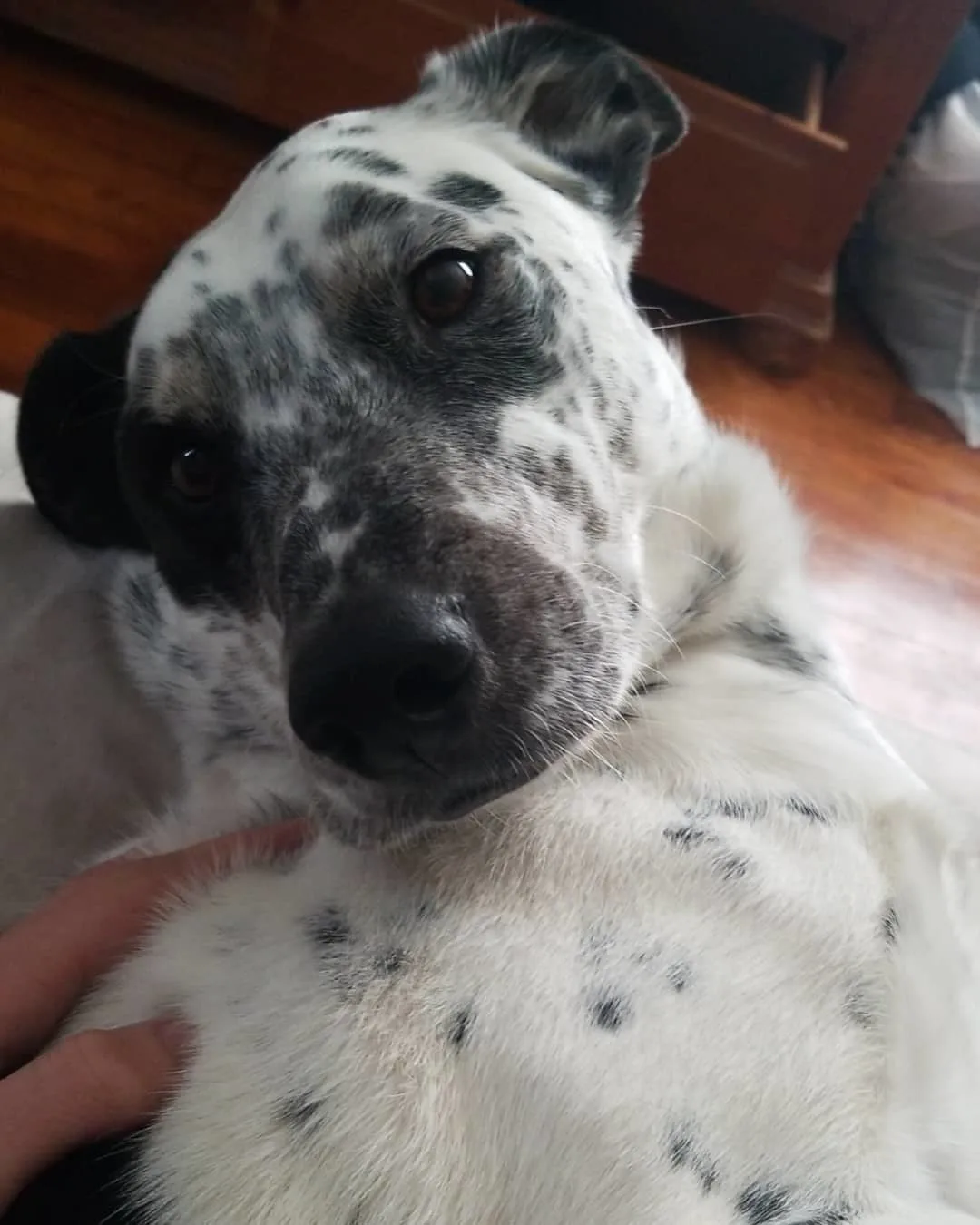
Photo: Instagram (@joshuamadru)
The Ideal Home Type for a Dalmatian Husky Mix
Because the Dalusky’s parents are both energetic, this mix will appeal to anyone who lives an active lifestyle and has the means and patience to care for and teach a dog.
The Dalmatian Husky Mix is a huge, lively dog, he thrives in a home with a large yard and a family who can take him for daily walks.
Because both of his purebred parents are gentle with children, this crossbreed will do well in most households with children.
Keep in mind, however, that purebred Dalmatians have guarding concerns. This suggests that your Dalmatian or Dalmatian Mix might be protective, so keep an eye on him around children and other dogs.
Buying or adopting?
It’s critical to purchase your Dalmatian Husky Mix puppy from a reputable breeder.
It is usually a good idea to complete your research before purchasing or adopting a Dalusky. If you have only little information available on the breeder, it would be safer to look elsewhere.
Purebred and mixed breed dogs are available at rescue shelters. Finding a Dalmatian Husky Mix puppy at a rescue center, on the other hand, is a different story. It will be determined by what is available at the moment. Adoption fees typically range between $50 and $100.
If you’re looking for Dalmatian Husky Mix pups for sale, expect to pay between $500 and $1000 for one of these cute puppies. The cost will be determined by the breeder in question as well as any potential concerns within the breed.
Make sure to inquire about the parent dogs’ behavioral characteristics as well as any health issues they may have had in the past.
Additionally, make an effort to meet the parents of your Dalmatian Husky Mix. That way, you’ll have a decent idea of how the puppy’s temperament will develop as he grows older.
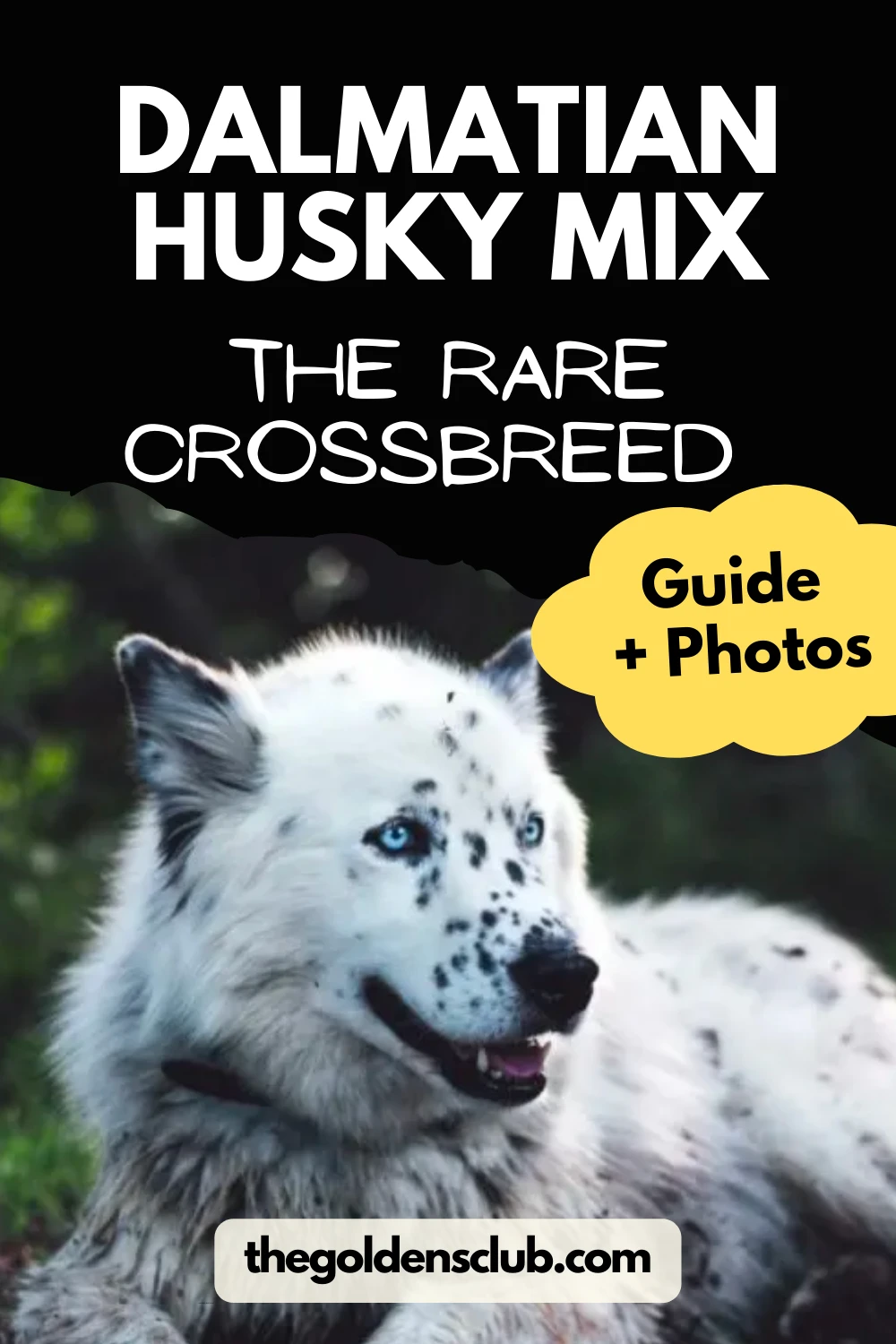
Read more:
- Lemon Dalmatian: What Makes Them Special
- Dalmatian Pitbull Mix: Rare And Demanding
- Long Haired Dalmatian: The “bred away” dog
- Dalmatian Golden Retriever Mix: The Amazing Goldmation

